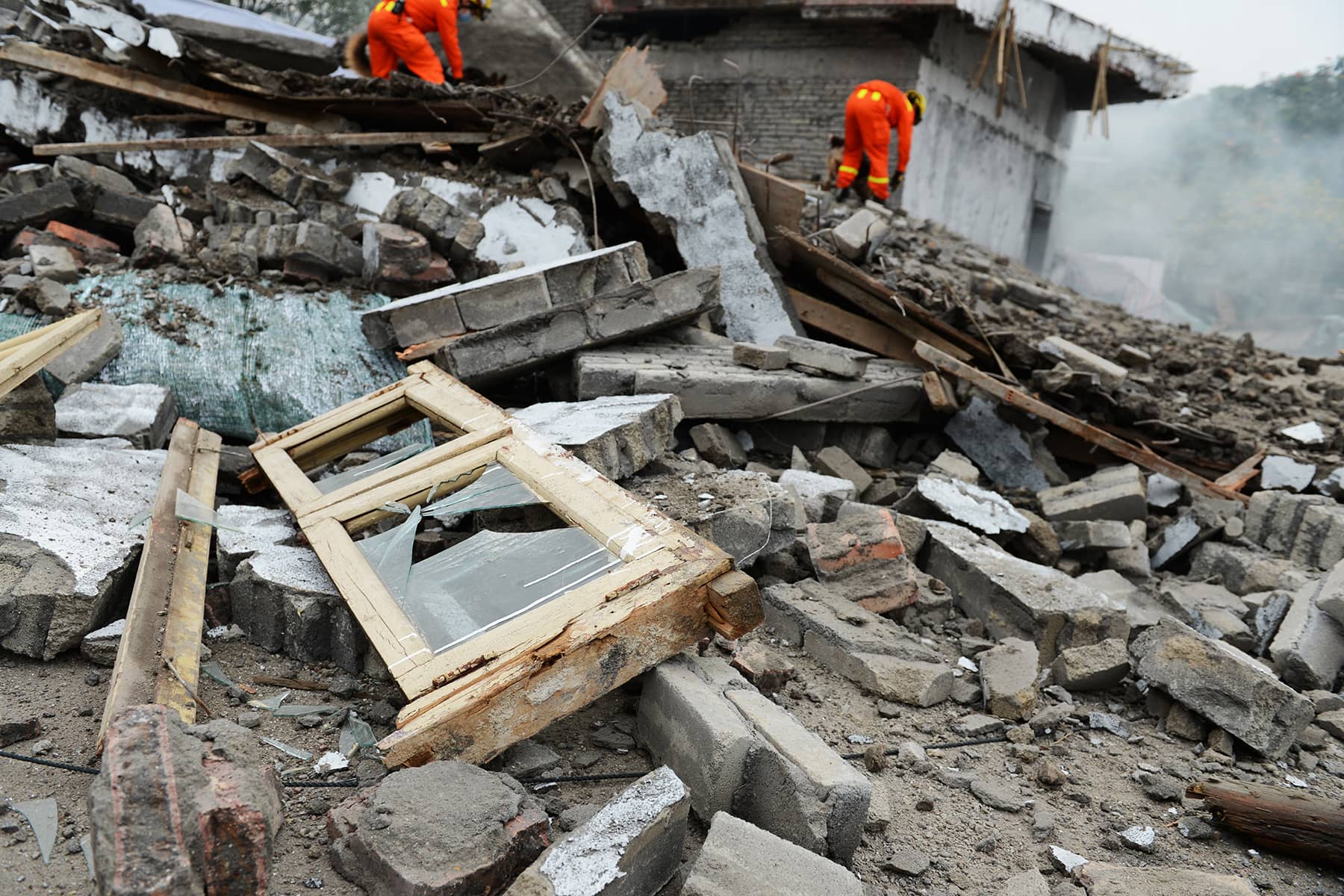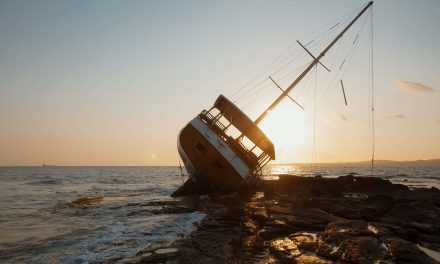
Republicans have been lying to their voters in the Midwest and South for decades, and now those the same voters are dying as a result of unprecedented severe weather that ties directly back to those lies. This is a climate change story that fossil fuel billionaires and their GOP lackeys would rather you did not know.
As more and more people are killed by extraordinarily severe weather in places where it used to be unusual it is going to get harder and harder to keep Red State citizens from finding out how badly they have been screwed by the unholy alliance between Republicans and oil barons.
Severe weather in the United States is not only getting worse, it is moving. There is a reason L. Frank Baum placed his 1901 novel The Wizard of Oz in Kansas: the worst and most frequent tornado activity in the world at that time was in the American Great Plains states — particularly Kansas.
Now that is changing, as weather extremes are moving to the Midwest and the South. Recently, deadly tornadoes — some with wind velocities in excess of 200 mph — have ravaged Kentucky, Arkansas, Tennessee, Missouri, Illinois, Georgia, Ohio and Indiana.
This new burst of unusually extreme weather is driven by global warming and its impact on the Arctic, our oceans, and the Gulf of Mexico. And it is going to be America’s new normal, although in all probability this is just the beginning and over time it will get a lot worse.
America has always had the most extreme weather of anyplace else on Earth, according to Susan Cutter, director of the Hazards Vulnerability and Resilience Institute at the University of South Carolina.
China has more people and a larger landmass than we do, but, Cutter told ABC News, “they don’t have the same kind of clash of air masses as much as you do in the U.S. that is producing a lot of the severe weather.”
The severity of America’s Great Plains states’ historically extreme weather was the result of geography.
While there’s a massive amount of land on either side of the European/Asian land mass, the United States is bracketed by two giant bodies of water, the Pacific and Atlantic oceans. We also have a huge mountain range — the Rockies — that helps determine where turbulent air from the west ends up, particularly as it encounters colder air from the north and warmer air from over the Gulf of Mexico.
As North Carolina state climatologist Kathie Dello told ABC News, it’s because of “where we are on the globe,” adding, “It’s truly a little bit … unlucky.”
But now, as the Gulf of Mexico is heating up faster than the oceans on either side of us, combined with “bomb cyclone” cold weather coming down from Canada because melting ice in the Arctic is making the Jet Stream less stable, that severe weather is moving to the Midwest and South.
This appears to be one of the most consequential outcomes of climate change, severe weather-wise, for the United States.
As Victor Gensini, associate professor in the Earth, Atmosphere and Environment Department at Northern Illinois University, told The Chicago Tribune, the Midwest and South are replacing the Plains states as the epicenter of severe weather.
“That’s a really, really big deal for human exposure and vulnerability,” Gensini told Ezra Maille. “A tornado that goes through a wheat field in Kansas is not a big deal, but a tornado that goes through southern Cook County is a huge deal.”
He added that the Great Plains will probably continue to experience more and more severe drought while tornado activity is shifting toward the East and South.
The fossil fuel industry has known with a high level of certainty how severe weather was a probable outcome of America’s dependence on their products ever since the 1970s.
Yet for the fifty years since then — and continuing to this day — they fund phony “science” and shills to deny climate change or try to spin it as a positive, all while pouring hundreds of millions of dollars into the campaign coffers and personal bank accounts of mostly Republican politicians.
We’re at least 40 years behind where we should be in dealing with the fossil fuel/global warming crisis because giant oil companies have run massive disinformation campaigns while funding the political careers of hacks in Congress willing to lie to the public for them.
President Jimmy Carter declared a national crisis in 1979 and proposed legislation to create “this nation’s first solar bank, which will help us achieve the crucial goal of 20 percent of our energy coming from solar power by the year 2000.”
FDR had sold bonds to the public to fund a government corporation that would develop synthetic rubber for fighter plane tires back in the day, and Carter wanted to do the same to end our dependence on fossil fuels:
“Just as a similar synthetic rubber corporation helped us win World War II,” Carter said, “so will we mobilize American determination and ability to win the energy war.”
In that same July 15, 1979 speech, he proposed the government issue bonds that would fund:
“[T]he creation of an energy security corporation to lead this effort to replace 2-1/2 million barrels of imported oil per day by 1990. The corporation will issue up to $5 billion in energy bonds, and I especially want them to be in small denominations so that average Americans can invest directly in America’s energy security.”
But it all came crashing down 43 years ago when the fossil fuel industry’s candidate, Ronald Reagan, replaced Carter, killed the solar bank and the bond program, and even took Carter’s solar panels off the roof of the White House.
The big question now is how long the GOP will be able to keep up their climate change denial in the Red states currently being hammered by extreme weather before their citizens catch on to what’s happening and demand action to reduce our carbon emissions.
As Dr. Michael Mann, Presidential Distinguished Professor in the Department of Earth and Environmental Science at the University of Pennsylvania and director of the Penn Center for Science, Sustainability, and the Media (PCSSM), told me yesterday:
“It is rather ironic that many of the states that are seeing the worst climate change impacts—Texas, Florida, Louisiana, Mississippi, Alabama, and Florida—are red states, with governors and legislatures that are far more interested in doing the bidding of polluters than representing the people they’re supposed to be representing.
“Unsurprisingly, these states are all among the lowest when it comes to per capita spending on public education. The alliance of rightwing politicians and polluters prefers a poorly educated electorate, ignorant of the environmental health damage being done to them.”
So, what can be done other than offering subsidies for electric cars? Number one on the list is to put a price on carbon, which will bend market incentives toward green and renewable energy as a replacement for fossil fuels.
According to the World Bank, there are currently 70 carbon pricing programs in place around the world, covering a bit over 23 percent of all emissions. Some are outright carbon taxes, typically with a rebate program to low- and average-income consumers, and some are cap-and-trade type programs – like President George HW Bush put into place to deal with sulfur dioxide emissions.
Canada’s carbon tax, which they put into place in 2019, is working so well that they actually sped up the process of implementation this year.
The original plan called for the initial $10/ton carbon tax to go up $10 every year until it hit $170/ton. The money collected is then recycled back to low- and average-income consumers to compensate them for the extra costs they’ll incur driving and heating their homes. But the program has been such a success that Canada’s government announced this week they’re raising the carbon tax by a full $15 this year.
They can pull this off because the rebates represent, for most Canadians, far more money in their pockets than the cost of the carbon tax. The brunt of the tax is instead borne by Canadian businesses, who are the group it’s designed to push toward green — and tax-free or even green-subsidized — energy sources.
An average taxpayer in Alberta province, for example, now gets a $386 check or bank deposit from their government every three months. It’s $340 quarterly in Saskatchewan, $328 in Newfoundland, $248 in Nova Scotia, and $264 in Manitoba.
This is a system that could work very well here in the US, if only there was the political will to make it happen. And, as we cut emissions and figure out new and better ways to pull existing carbon out of the air and oceans, we may be able to dial back on the increasing severity of storms that are ravaging Red states.
The obstacle to pricing carbon in the US is widespread ignorance of how severe our problem is and its origins in fossil fuel emissions. Fully fifty-eight percent of Republican and Republican-leaning voters say climate change is “not an important concern” and a mere 17% believe human activities like burning fossil fuels “contribute a great deal to climate change.”
Hopefully the deadly disasters sweeping Red states now will wake up Republican voters and motivate them to demand their Republican politicians stop taking money from fossil fuel billionaires and do something now to stop climate change from getting any worse.
Hxdbzxy
© Thom Hartmann, used with permission. Originally published on The Hartmann Report as Will the Red State Mega-Global-Warming Tornadoes Change Republican Minds?
Subscribe to The Hartmann Report directly and read the latest views about U.S politics and other fascinating subjects seven days a week.














